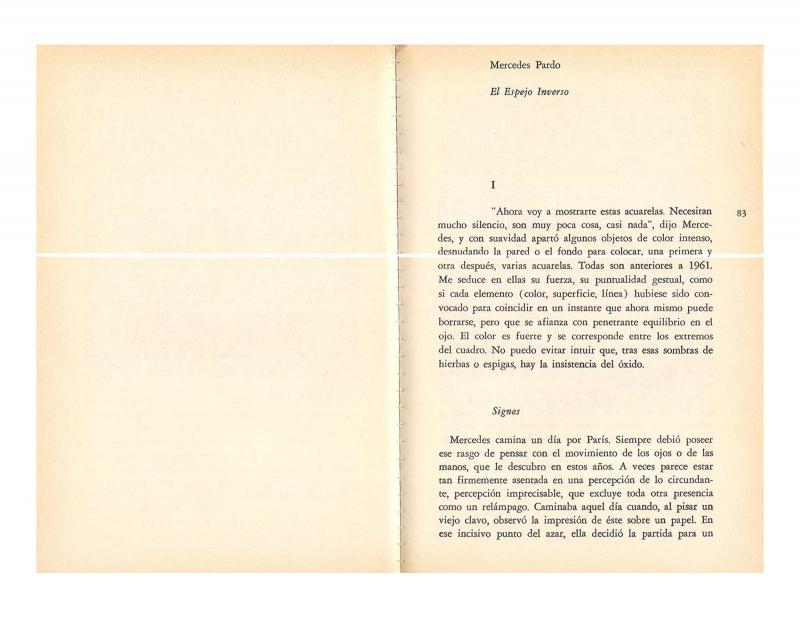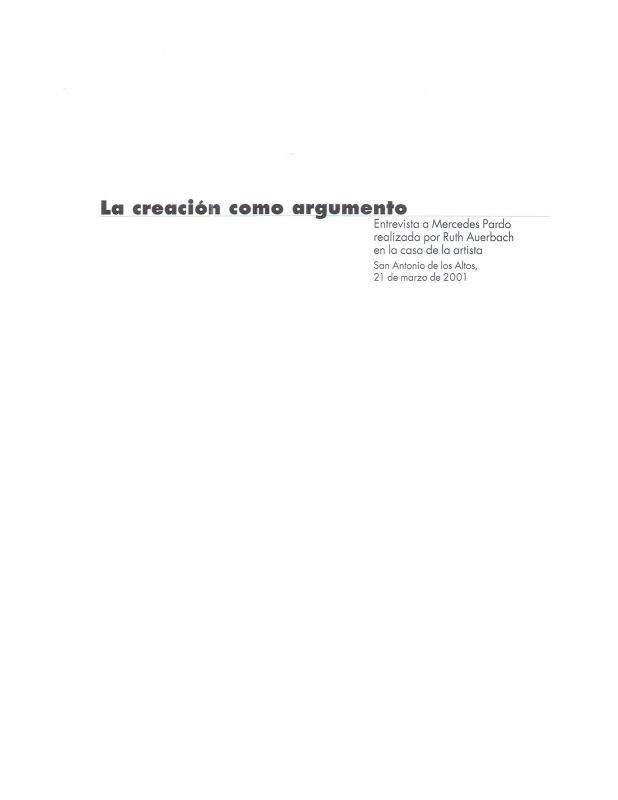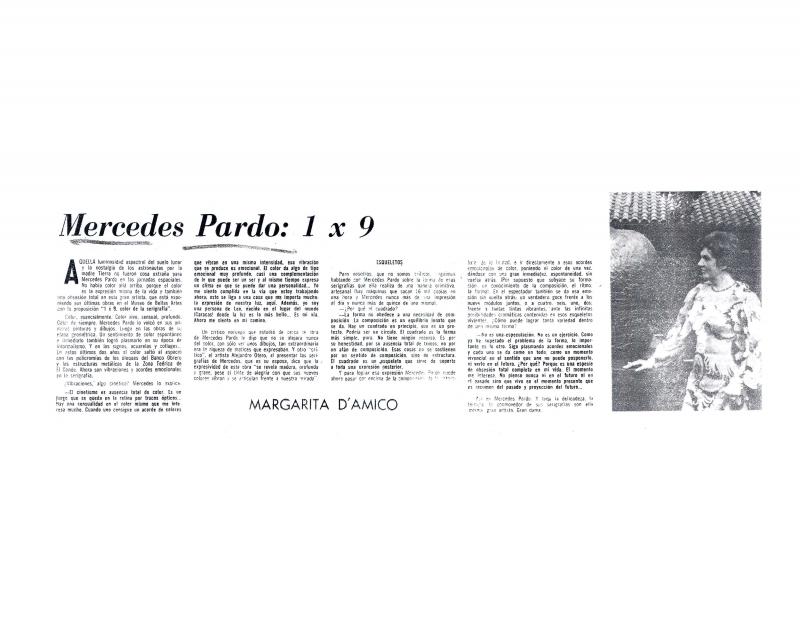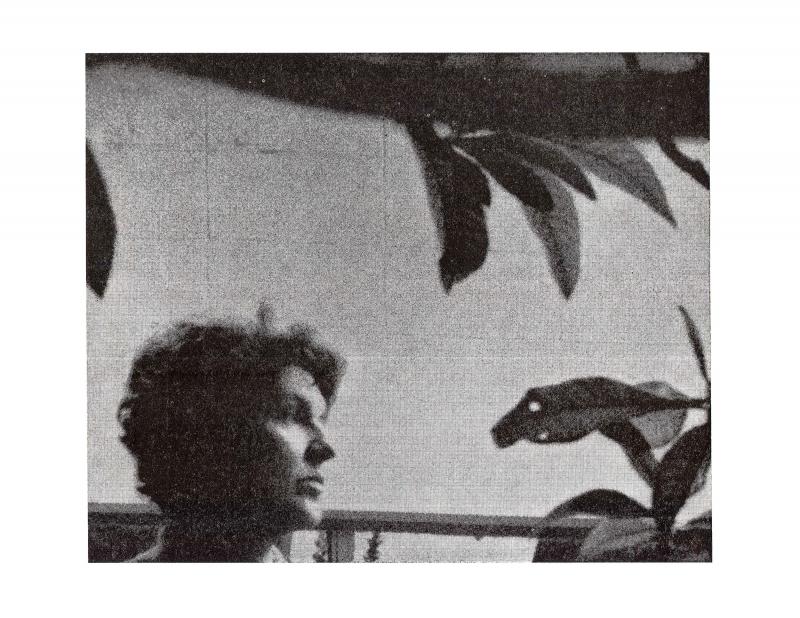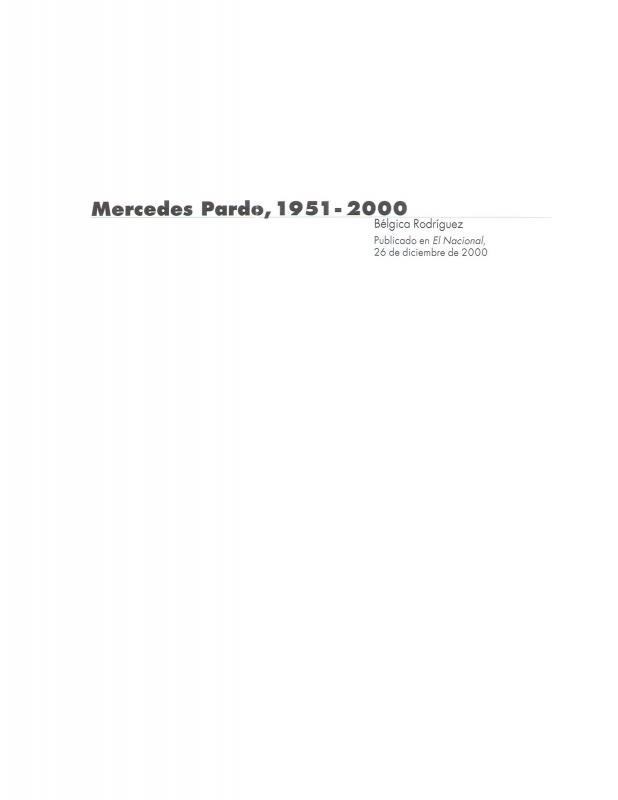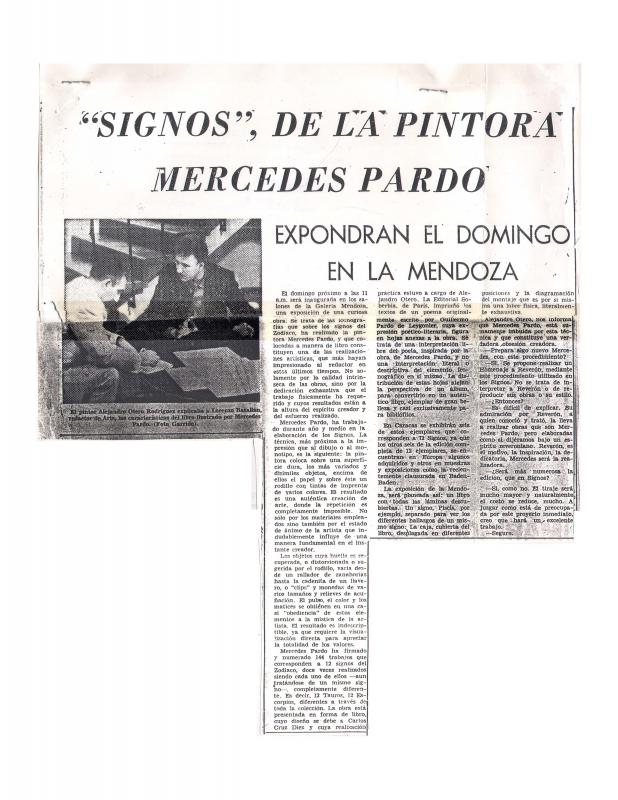José Balza (b. 1939) is one of the most representative Venezuelan—and Latin American— writers, whose works have been translated into several languages. His essays about Mercedes Pardo (1921–2005) are important because of their literary quality and because he and she were personal friends and were in constant touch during her evolution as a visual artist since the 1970s.
Balza describes Pardo as an “exceptional colorist;” he mentions her “color wisdom” and writes in sensitive and poetic terms about both the artist and her work. He sees a “conscious level of freedom” in her approach to “near-danger zones for painting itself;” he speaks of her “domesticated energy” and decides that “perfection” is the word that best describes her work. These reflections reveal the image that underpins his review; a “miraculous visual skin”: structure, plane, color, and space. In her work, the plane is the product of her passion for the image and the unfathomable culture of optical expression. In this brief essay, Balza cleverly weaves together the artist’s biographical details and the social, topographical, and climatic environment in which she evolves through the characteristic sensitivity of her visual art.
[There is another article by Balza in the ICAA digital archive about the Venezuelan painter, “Mercedes Pardo: El espejo inverso” (doc. no. 1157206). To read other comments on her work, see the following material in the same archive: the interviews by Ruth Auerbach, “La creación como argumento” (doc. no. 1143060), and by Margarita D’Amico, “Mercedes Pardo: 1 x 9” (doc. no. 1155959); the articles by Alejandro Otero, “Mercedes Pardo: color de la serigrafía” (doc. no. 1143176), and Roberto Guevara, “Color y módulos en Mercedes Pardo” (doc. no. 1155991); see also the articles by Bélgica Rodríguez, “Mercedes Pardo: 1951 – 2000” (doc. no. 1143027); and by Lorenzo Batallán, “‘Signos’ de la pintora Mercedes Pardo” (doc. no. 1155975)].

